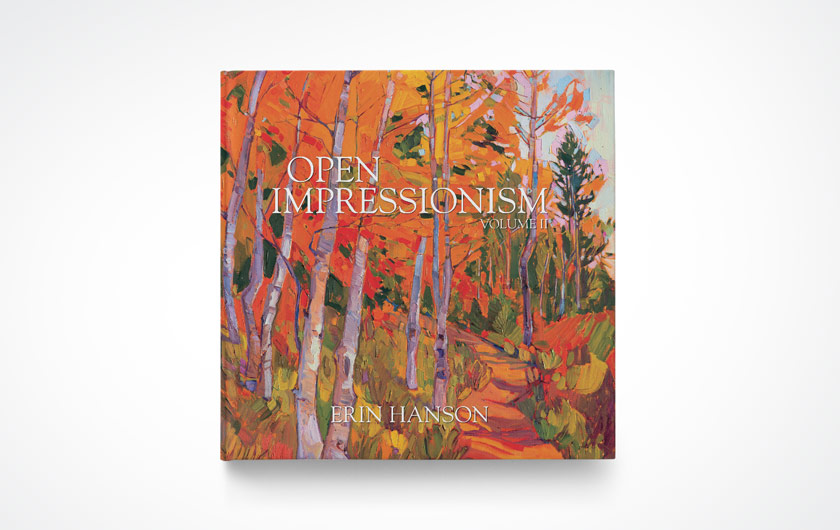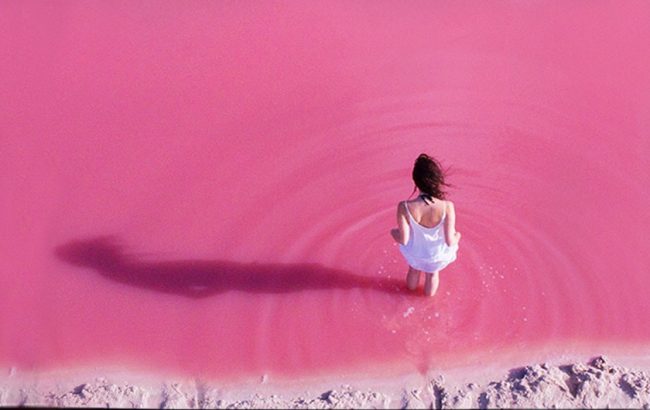Print carries with it a prestige, immediacy, and intimacy that’s unavailable to work that appears in an exclusively digital space. With viewers that are used to endless scrolling, these days, digital talk is cheap. Reducing art to a catalog or list on a screen is a more passive experience for your audience and costs them more time. We want something where viewers are actively engaged, something that compels a viewer to respond, and creates space for dialogue.
In the past, print might have been cost-prohibitive or uninspiring, but the technological advancements of the last 15 years have created a new breed of custom print products that have endless possibilities and open up a new revenue streams with scalable products for artists.
PRINT’S ENDLESS POSSIBILITIES
1. Wow clients and galleries with a printed portfolio. Nothing is better in-person than print. Sure, you’ve uploaded your work to a site and built a great display. But that tablet leaves you scrolling and shuffling through a body of work that’s too cumbersome to view at a glance. A printed book means handing over a physical, statement-making object to your prospective clients and curators. Print appears very expensive (but it isn’t) and reveals investment in your own work. That endless stream on a tablet is free for the creator, but costs more time for the viewer. A carefully-edited print piece sets you apart.
2. Develop new revenue streams. Print has become a new luxury “object of desire”. Where pieces of your work might be one of a kind, you can still reproduce it for sale by putting it in a book you design yourself. A book might also mean more creative control for you than other means of licensing, like textiles and gifts. Your friends, fans, and followers would be willing to purchase your work at scaled pricing, even if they can’t afford an original piece. With the diversity of paper types available and print-on-demand technology, you can create a collection of art-print quality pages and set it up for sale with minimal upfront cost to you. From collectors’ anthologies, custom exhibit catalogs, to short publications from events or series, you can create a book of any size and scale to sell that accompanies your work.
3. Create lasting archives. If it goes on a web page, it can go on a print page. With its roots in the material world, good art will transcend the medium, and it deserves to be preserved. Build a library of your best work not only for posterity, but for promotion and inspiration. Viewing the development of a technique, the growth of an idea, the expansion of a body of work over time can be a really powerful experience.
HOW IT WORKS
There are two ways to make and sell a book: print on demand (POD), and offset printing. You may be familiar with offset printing—this is the traditional way of creating a book with plates and presses, and it requires large orders to make it cost-effective. It offers more customization possibilities in sizes, covers, and paper types, but you have to finance a large order up front, and getting a book produced requires considerable print expertise.
POD uses the newest printing technology to create books one at a time. Books are printed as they’re ordered, and the files are stored at the printer for future orders. This means there are no large, up-front orders required to get a book in the world. POD orders can qualify for volume discounts, though the price-per-copy is substantially higher than the same book would be if it were printed offset. With print-on-demand books, it’s still possible to sell them online through your own site or through Amazon, BN.com, etc., and someone else will handle your order fulfillment and distribution.
THE BLURB PLATFORM
Blurb is a self-publishing and sales platform that helps artists, photographers—creatives of any kind—bring their best ideas to the page. We provide inspiration, instruction, help, and advice at every step along the way. Founded in 2005, there are over 2 million customers worldwide, with nearly 22 million units shipped to over 70 countries around the world.
We’ve created a range of applications for any skill level. Getting your book in the world starts with putting one of these free tools to work:
- SIMPLE: BOOKIFY
Make a photo book of any size and pull from Instagram and Facebook galleries with our online tool. - CUSTOM: BOOKWRIGHT
Utilize templates in a variety of genres and create custom layouts in our robust (but free) desktop tool. - PRO: PLUG-IN FOR ADOBE INDESIGN
Create completely custom layouts with built-in bleed lines and trim guides by installing the Blurb plug-in for InDesign. - BUILT-IN: LIGHTROOM BOOK MODULE
Choose from hundreds of layouts and create photo books by using the Book Module right inside Adobe Photoshop Lightroom. - MOBILE: MOBILE APP FOR IPHONE & IPAD
Make a photo book on the go with the Blurb Mobile App. Try the 5×5 in. Mini Square, exclusive to the app!
Once you’ve created your book file with one of these tools, you upload your book file to your account. Our printers translate that file into a beautiful, bookstore-quality book. Blurb knows that paper is everything when it comes to presenting image-rich content. Different formats feature different papers and printing. From luxurious photo print paper to basic, economical trade white, there’s a way to balance cost with your vision for a show-stopping book.
With a range of sizes, paper types, and cover types, you can create a book with the look and feel that suits the art or the event. You may want a coffee-stable stunner for collectors who would pay premium prices for a copy, or a smaller exhibit catalog for your artist statement and commentary with more a more affordable softcover and standard paper.
Once you begin looking at projects with 750 copies or more, you’ll want to work with Blurb’s in-house experts on the Large Order Services team. Blurb’s Large Order Services team works with you every step of the way to create a book that hits your project goals. Get start-to-finish help answering questions, overseeing details, and solving logistics while staying on budget. They can help you get Blurb’s best pricing for your book, but they also use their expertise to ensure you get the best possible book from the print production process.
After you’ve ordered a physical copy and proofed and revised it to your satisfaction, you’re ready to set your book up for sale. Blurb books can be sold through the Blurb Bookstore, a free online storefront to list your books. It comes complete with personal product pages, metrics, and sharing tools. Books in the Photo Book format can be sent right to Amazon. Blurb users can also list Trade Books online through Ingram, which distributes to Amazon, BN.com, and more than 200,000 other retailers.
If you’re looking to sell your book at an event, you can order only the copies you’ll need, and you’ll have your books in-hand in only a couple of weeks. The more copies you order, the more volume pricing becomes available to you. In-person, event sales often motivate large offset orders, which give you the absolute lowest price per copy (and higher margin for you). Offset orders have a longer timeline, however, so you’ll want to work that into your plans.
THE BOTTOM LINE
It’s time to disrupt this screen-centered world. It’s time to create something that won’t be lost to the ether—like art, something beautiful and powerful that speaks for itself and stands the test of time. A book can do that. Show your range and empower your work to its full potential by putting it in pages.
Ready to go for it? Use this special Promotion Code and save 30% on your next BLURB photo book: ARTEXPO18.
Offer valid through May 31, 2018 for photo books made by you only. A 30% discount is applied toward your product total with no minimum order or maximum discount. This offer is good for five uses, and cannot be combined with volume discounts, custom orders, other promotional codes, gift cards, or used for adjustments on previous orders.
By Jessica Ruscello, BLURB









VS Art
8 May
Artists and those representing artists really do need some way to showcase our art affordably yet often we rely on digital. I’ve always said it’s never the same and when asking for gallery or museum representation, how can they get such an idea of a piece without seeing it in person?
Thank you for this idea. Seems like a great offer and will consider.